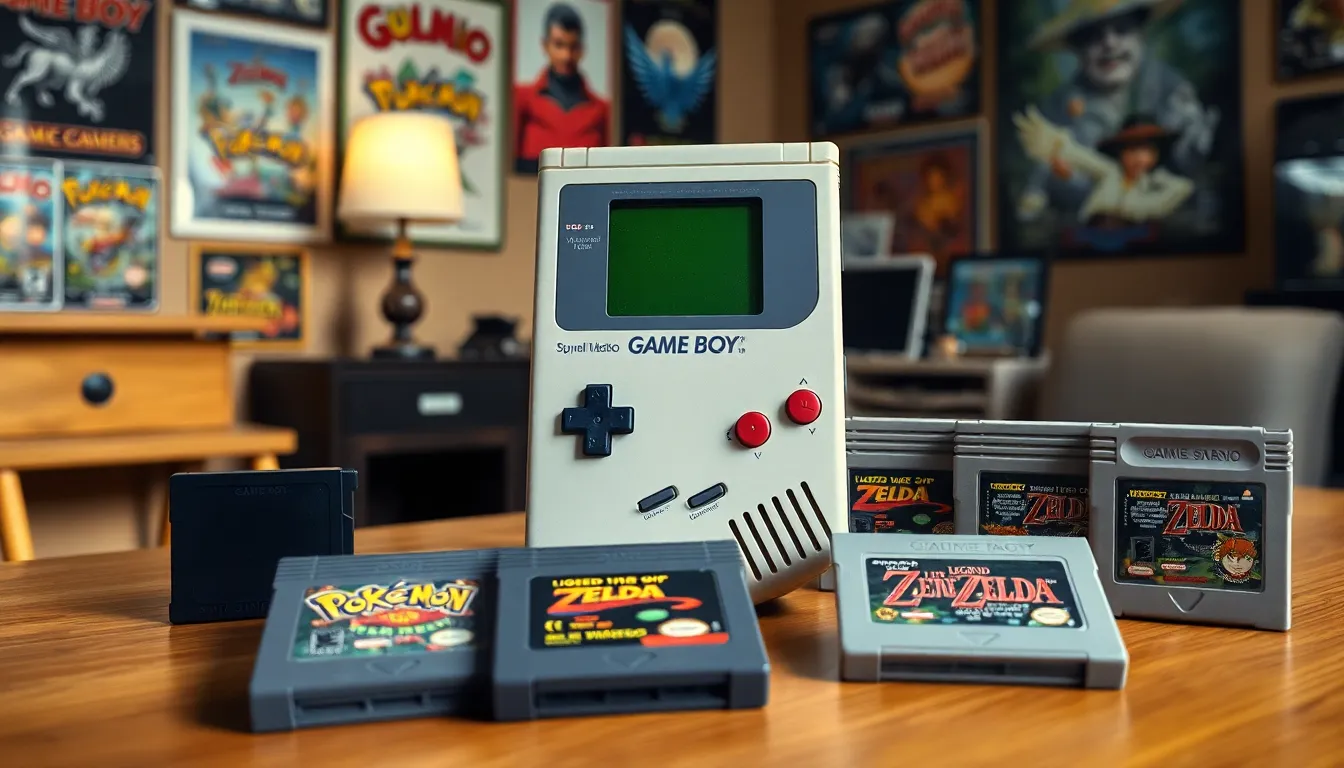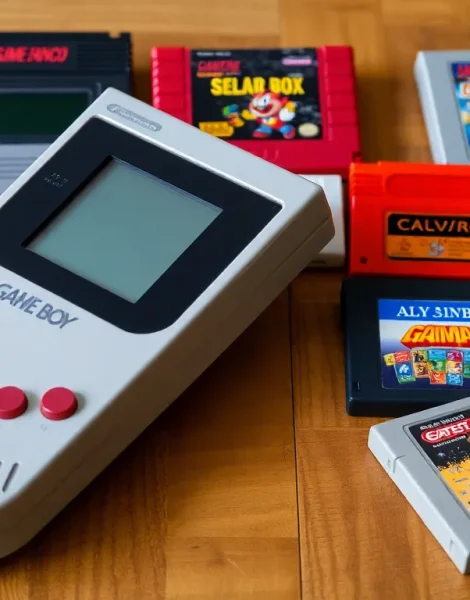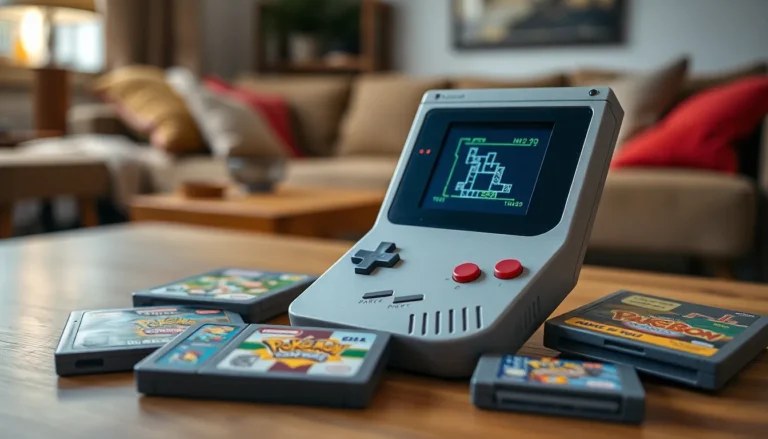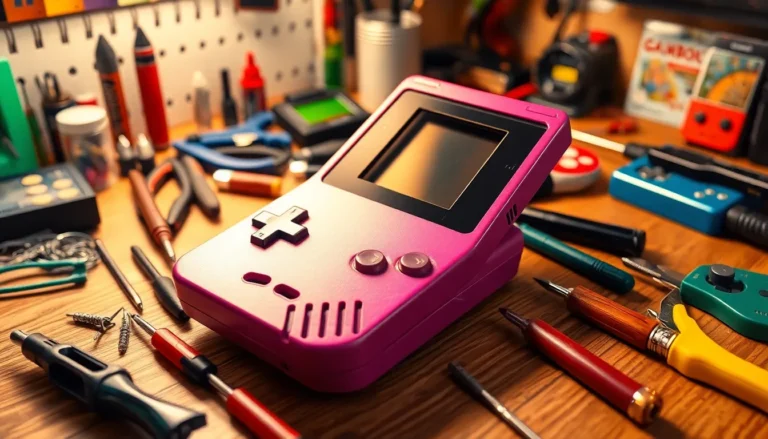The Game Boy revolutionized handheld gaming when it launched in 1989, captivating players of all ages with its innovative design and engaging titles. Over the years, this iconic device has not only carved out a special place in gaming history but has also become a sought-after collectible. As nostalgia sweeps through the gaming community, many are curious about the current value of Game Boy consoles and games.
Understanding the factors that influence the Game Boy’s value can help collectors and enthusiasts make informed decisions. From the rarity of certain models to the condition of cartridges, several elements play a crucial role in determining worth. Whether you’re a seasoned collector or just starting out, exploring the Game Boy’s value reveals a fascinating intersection of gaming culture and economics.
Table of Contents
ToggleOverview of Game Boy Value
Game Boy value fluctuates based on several key factors, including model rarity, condition, and packaging completeness. Collectors and enthusiasts often base their assessments on historical significance and demand within the gaming community.
Factors Affecting Value
- Model Rarity: Limited-edition models, such as the Game Boy Advance SP “Zelda: A Link to the Past,” command higher prices due to their scarcity.
- Condition: Items in pristine condition, free from scratches, dirt, or fading, fetch better prices. Well-preserved cartridges and accessories significantly enhance overall value.
- Packaging Completeness: Original boxes, manuals, and inserts increase value. Collectors prefer complete sets, which can elevate prices considerably.
- Market Demand: Trends in gaming culture can influence demand. Titles experiencing a resurgence in popularity often see increased values.
Current Trends in Market Price
Game Boy models generally range from $50 to over $500, depending on their condition and rarity. Popular models, such as the Game Boy Color, typically sell for $70 to $150. Rare titles like “Shantae” may command prices exceeding $1,000 in mint condition.
Regional Variations
Pricing may vary by region due to local demand. North America and Japan generally exhibit higher prices compared to Europe, primarily driven by greater collector interest in these areas.
Resources for Valuation
Collectors and sellers often utilize resources like price guides and online marketplaces, such as eBay and PriceCharting, to gauge current values. These platforms provide valuable historical sale data, assisting in determining fair price ranges for specific models and games.
Knowledge of these factors aids both seasoned collectors and newcomers in making informed decisions regarding their Game Boy investments.
Factors Influencing Game Boy Value

Game Boy value fluctuates based on several key factors. Understanding these elements is vital for collectors and buyers alike.
Condition
Condition plays a significant role in determining Game Boy value. Items classified as mint or near-mint fetch higher prices. Scratches, discoloration, or functional issues lower value substantially. Original hardware in excellent working condition commands greater attention. Collectors often seek complete bundles, including manuals and accessories, as these add value.
Rarity
Rarity significantly influences the pricing of Game Boy consoles and games. Limited-edition models, such as the Game Boy Light or special colors, attract premium prices. Correlation exists between the limitedness of a model and its market value. Regional exclusives exemplify rarity’s impact, with North American or Japanese editions sometimes fetching higher values based on scarcity. Collectors prioritize rare games or accessories, leading to competitive bidding and higher sales prices.
Demand
Market demand directly affects the value of Game Boy items. Popular titles or consoles can experience spikes in demand driven by nostalgia or gaming trends. Games like “The Legend of Zelda: Link’s Awakening” and “Pokémon” tend to sell at increased rates due to their enduring popularity. Seasonal increases often occur, particularly around holidays when collectors seek gifts. Current market trends, including online selling platforms, also shape demand, with prices reflecting shifts in consumer interest.
Popular Game Boy Models and Their Values
Several Game Boy models occupy a significant place in gaming history, each with unique values based on rarity, condition, and demand.
Original Game Boy
The Original Game Boy, released in 1989, remains a classic among collectors. Prices for this model typically range from $50 to $150, depending on condition and packaging. Variants like the Play It Loud Edition or the Clear case version often fetch higher prices due to limited availability. Units in mint condition with original packaging can reach values over $200, appealing to dedicated collectors.
Game Boy Color
Released in 1998, the Game Boy Color brought vibrant graphics and a library of popular titles. Prices vary widely, starting from $30 for common models in fair condition to upwards of $250 for rare colors like the Limited Edition Pokémon model in pristine condition. Completeness, including original boxes and manuals, greatly influences value. High-demand games like “The Legend of Zelda: Oracle of Ages” can also boost overall worth in collections.
Game Boy Advance
The Game Boy Advance, launched in 2001, expanded gameplay with advanced features. Collectors often see these units priced between $20 and $150, based on factors like design, color, and condition. Limited edition models, such as the “Zelda: The Minish Cap” bundle, can command prices exceeding $300 when complete. The condition heavily influences market performance; for example, systems with minimal wear or scratches achieve much higher valuations.
How to Determine Game Boy Value
Determining the value of a Game Boy involves thorough research and an understanding of various key factors. This process requires examining market trends, pricing guides, and condition specifics.
Market Research
Market research plays a critical role in assessing Game Boy values. Collectors can follow these steps for effective research:
- Analyze online marketplaces like eBay or Mercari for sold listings, focusing on completed transactions.
- Join collecting forums and communities, such as Reddit or specialized Facebook groups, to gain insights from experienced collectors.
- Track auction results for notable Game Boy models to gauge competitive pricing and demand.
- Observe trend reports from gaming magazines or blogs that cover retro gaming markets.
This approach helps in understanding current demand and pricing discrepancies across different platforms.
Pricing Guides
Pricing guides offer structured data to evaluate the worth of Game Boy items. Key sources include:
- Online price guides from websites dedicated to video games, which provide estimated values based on historical sales data.
- Collector’s guides, available in print or digital format, that detail values by model and condition.
- Marketplaces like PriceCharting, which aggregate data from sales to present average prices for various Game Boy models and games.
Purchasing power can fluctuate based on these guides, making them valuable tools for any collector aiming to make informed decisions.
Tips for Buying and Selling Game Boys
Research Models and Rarities
Research specific Game Boy models, including limited editions and variations, to understand their market value. Collectors should prioritize knowledge on factors such as color, design, and release year.
Inspect Condition Carefully
Inspect each Game Boy unit for signs of wear, scratches, and functional issues. Serious collectors value items in mint or near-mint condition, as these fetch higher prices compared to those in poor condition.
Check for Completeness
Check if the original packaging, manuals, and accessories accompany the Game Boy. Complete sets significantly increase overall value, especially for collectors seeking rarity and authenticity.
Utilize Online Marketplaces
Utilize platforms like eBay and specialized gaming marketplaces to compare prices and track trends. Analyze sold listings to gauge what buyers recently offered for similar items, establishing a price baseline.
Join Collecting Communities
Join online forums and social media groups dedicated to Game Boy collecting. Engaging with fellow enthusiasts provides valuable insights, trends, and potential leads on buying and selling opportunities.
Follow Auction Results
Follow auction results on sites like Wright Marshall or Heritage Auctions, as they reveal current market dynamics. Observing auction prices helps determine fair valuation for specific Game Boy models.
Review Pricing Guides
Review established pricing guides and resources like PriceCharting that compile comprehensive sales data for Game Boy items. These tools assist in understanding market variations and gaining perspective on valuation.
Be Patient with Selling
Be patient when selling Game Boys, especially rare models. Taking time to find the right buyer often leads to better offers than quick sales through hasty transactions.
Evaluate Shipping and Handling
Evaluate shipping and handling costs when buying or selling units. Proper shipping ensures Game Boys arrive safely and maintain their condition, protecting their value during transit.
The Game Boy remains a significant piece of gaming history and continues to captivate collectors. Understanding its value isn’t just about knowing prices; it’s about recognizing the factors that influence worth. Condition rarity and market demand play crucial roles in determining how much collectors are willing to invest.
As interest in retro gaming grows there’s no doubt that the Game Boy will maintain its status as a sought-after collectible. For those looking to buy or sell these iconic devices thorough research and engagement with the collecting community can lead to informed decisions and successful transactions. Whether for nostalgia or investment the Game Boy’s legacy endures, making it a valuable addition to any collection.









